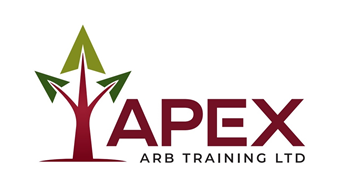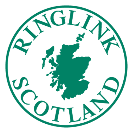Select tab
About
This is an advanced course.
You'll need to be an experienced and qualified inspector with an in-depth knowledge of plant and arboricultural science.
You'll learn how to clearly and competently inspect potentially hazardous trees.
Writing appropriate and detailed remedial works (control measures) will also be covered.
The finer details
Our training will take you to the next level in your profession.
But we expect you to be thoroughly experienced in carrying out tree inspections and surveys.
You'll also have an excellent knowledge of wood decaying fungi and the identification and interpretation of signs and symptoms of ill health and structural failure across a wide range of tree species and circumstances.
The course involves a balanced mix of theory and practical sessions.
You'll learn how to specify the necessary remedial works and record the inspection process.
You'll finish by undertaking an assessment.
Worth noting: You'll need to be physically fit to carry out some of the tasks.
Our course doesn't cover report writing, but your presentation of findings will be examined and advice given.
Who should attend?
Prospective learners should be experienced and qualified arboriculturists with an in-depth knowledge of plant and arboricultural science, including a thorough knowledge of wood decaying fungi, identification and interpretation of signs and symptoms of ill health and structural failure across a wide range of tree species and circumstances.
They should be thoroughly experienced in carrying out tree inspection and survey. People professionally involved in: arboriculture – specifically tree inspection. Learners must be physically fit and able to carry out the tasks required of the course programme.
What will be covered?
By the end of the course, you'll be able to:
Recognise the role of the tree inspector in risk management
Identify the legal framework in the context of statute and common law that affects tree inspection and the duties and liabilities of the owner, manager, and inspector
Summarise how a tree system functions, what constitutes a safe tree and know that energy is required to keep the tree in a healthy/safe state
Adopt a systematic and consistent methodology for carrying out visual tree inspection at an advanced level with the aid of binoculars, mallet, and probe
Collect data out in the field in accordance with the inspection instructions (having determined the scope and limitations) using a suitable format. For this course, a written survey template with appropriate headings will be used
Recognise a range of observable mechanical and biological defects as seen in trees and confirm by the use of textbooks where necessary
Identify a range of commonly seen pests, diseases, and disorders that affect tree safety, confirm their identity by the use of textbooks, where necessary, and state the arboricultural significance of finding them in the field
State the appropriate control/remedial measures required to eliminate or reduce risks identified in the inspection process to an acceptable level
Determine when an aerial inspection is required, also if pro-active management recommendations can be made which may eliminate future defects from forming
Prioritise the necessary tree/management works with time scales based on a broad category of risk assessment
Identify when it is appropriate to recommend the use of decay detecting or measuring equipment, based on a basic knowledge of the working principles of commonly available equipment
Understand that a balance between the remedial measure opted for and the range of benefits/values that a tree may have requires special attention, for example, amenity, wildlife, historical, veteran, rarity, and public access.
Courses
| Date | Location | Provider | |
|---|---|---|---|
| 06/05/2025 | Vegetation Management Training and Education | ||
| 07/05/2025 | Apex Arb Training | ||
| 13/05/2025 | South East Landbased Training Courses LLP | ||
| 19/05/2025 | Arboricultural Association | ||
| 20/05/2025 | Land Skills Training & Assessments Limited | ||
| 02/06/2025 | Arboricultural Association | ||
| 02/06/2025 | Apex Arb Training | ||
| 10/06/2025 | Tree Life Arboricultural Consultancy Ltd | ||
| 24/06/2025 | Arboricultural Association | ||
| 01/07/2025 | Tree Life Arboricultural Consultancy Ltd | ||
| 07/07/2025 | Apex Arb Training | ||
| 08/07/2025 | Plumpton College | ||
| 21/07/2025 | Arboricultural Association | ||
| 11/08/2025 | Apex Arb Training | ||
| 18/08/2025 | Kernow Training Ltd | ||
| 15/09/2025 | Apex Arb Training | ||
| 29/09/2025 | Arboricultural Association | ||
| 07/10/2025 | Tree Life Arboricultural Consultancy Ltd | ||
| 13/10/2025 | Apex Arb Training | ||
| 20/10/2025 | Arboricultural Association | ||
| 10/11/2025 | Arboricultural Association | ||
| 08/12/2025 | Ringlink Services Ltd |
Search for providers near you
If there are no suitable courses listed above, please fill in the details below and this will display a list of other course providers who also deliver this course.









